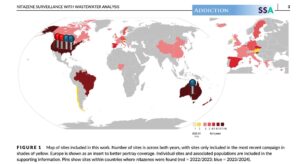New department of Environment and Health
With effect from 1 January 2017, researchers at the Institute for Environmental Studies’ Chemistry & Biology section and the Athena Institute’s Health & Life section will be combining forces in the new Department of Environment & Health. The merging of the two sections into a single department will reinforce the faculty’s profile in the field of life sciences, both in research and education. The new department will be led by Jacob de Boer and will be part of the Faculty of Earth and Life Sciences. From March 2017, the Department of Environment & Health will be housed in the recently-opened O|2 Lab building.
Dean Guus Schreiber had the following to say about the new department: “I see a wide spectrum of opportunities for Environment & Health. As a result of the links with environmental chemistry, health sciences and epidemiology, the department will be able to excel in research and education in the field of exposure to substances and their effects on human health. The department will thus be in a position to make a significant contribution to social issues, and, furthermore, to strengthen our prominent position in the domain of life sciences.”
Toxic effects of pollution on human and environmental health
The new Department of Environment & Health will carry out research into analytical methods and the toxic effects of pollutants on human and environmental health. The department will be one of the few research groups in the world to use an integrated and multidisciplinary approach to this end. The following questions are central to this research: Where does the pollution originate? What chemicals or groups of chemicals are involved? What do these substances do to humans? How toxic are they for humans and animals? And what does exposure to chemicals mean for society and, for example, people living in the vicinity of a factory?
Researchers in the department have developed various research techniques, such as Effect-Directed Analysis (EDA), bioassays and target and non-target screening with advanced analytical equipment. Also an epidemiological research is being carried out with a mother-child cohort comprising 330 mother-child pairs who have been monitored for five years now. The presence of a large number of hormone disrupting substances have, for example, been determined in various samples, including those of newborn babies’ first stools and urine.
Read more on the website www.falw.vu.nl/environmentandhealth
If you have any questions, please contact Jacob de Boer: jacob.de.boer@vu.nl



